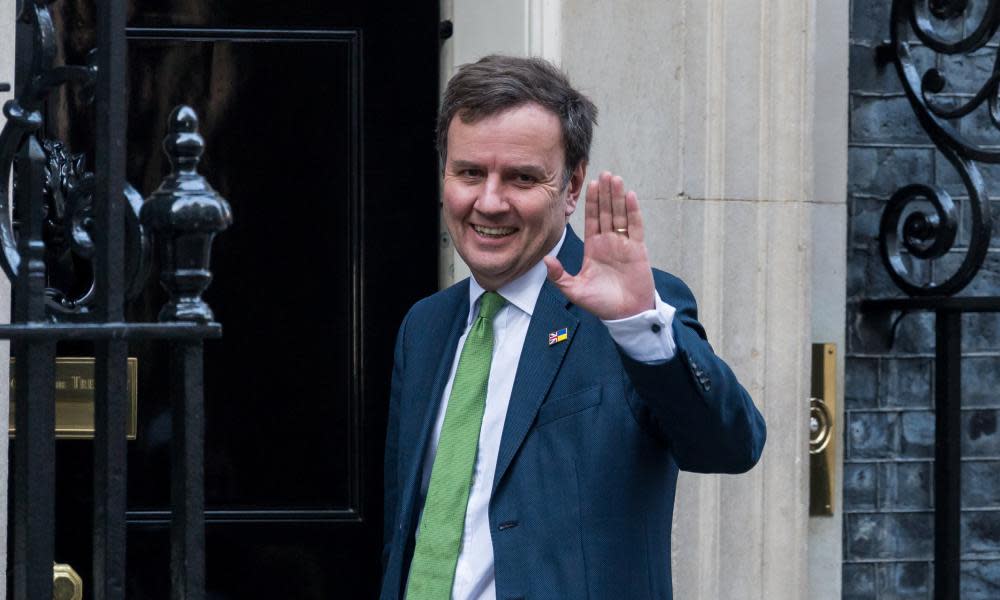The Guardian view on Rishi Sunak’s reshuffle: putting the Treasury in charge

Rishi Sunak’s reshuffle is about both tightening his grip on power and putting more departments on the Treasury list for re-education. By splitting up the Department for Business, Energy and Industrial Strategy, which had challenged Mr Sunak when he was chancellor, the prime minister has decapitated a rival economic policymaker in government. The new Department for Business and Trade will have some clout because its cabinet minister is Kemi Badenoch, a darling of the Tory right. During her bid to become Tory leader, Ms Badenoch seemed to think that government intervention lies at the heart of everything that is wrong with the British economy. Giving her a ministry designed to use state power underlines the nature of the political coup taking place.
Theresa May, Boris Johnson and Liz Truss all in very different ways railed against the economic orthodoxy imposed by the Treasury, tapping into Brexiters’ claims it was behind “project fear”. What previous leaders were upending was the legacy of George Osborne, the former chancellor who made austerity economics the organising principle of Tory politics. Mr Sunak’s elevation to Downing Street has revived Osbornomics. What his reorganisation also represents is the restoration of banking perspectives in government. Ms Badenoch, an ex-banker, and Lucy Frazer, a former corporate barrister put in charge of a new slimmed-down culture department, represent that trend.
Tying both shifts together is the rise of Greg Hands to be party chair. A former City trader, he was one of Mr Osborne’s most trusted Treasury lieutenants. Mr Hands’ arrival as the party’s cheerleader-in-chief suggests that Mr Sunak is pursuing an ideologically driven agenda that he hopes can be sold as economically necessary. Electoral calculations are never far away. Michelle Donelan, like Mr Hands, voted to remain. With a “blue wall” seat at risk from Lib Dems, her new job as cabinet science supremo gives her a media profile and a position likely to appeal to socially liberal voters. Perhaps the biggest winner from the reshuffle may be Labour’s Ed Miliband. He gets a whole new department – energy security and net zero – to shadow and a high-profile cabinet minister, Grant Shapps, to joust with.
Reshuffling his ministers and creating new departments will not solve Mr Sunak’s problems. The Tories have appointed a dozen people to be culture secretary in the past 13 years and are on their ninth business secretary since 2010. Ms Frazer’s move sees England get its sixth housing minister in a year – suggesting the issue isn’t a Conservative priority. The structural features of the economy as the result of financialisation – rising private debt, regional imbalances and insecure low-paid work – are not being seriously addressed despite the rhetoric on levelling up. Michael Gove refusing to be moved suggests the Treasury won’t get its way in every fight.
The Tory party remains factional and mutinous. It may be a high-risk act of conciliation to make a divisive critic party vice-chair. But promoting some new faces and rewarding loyalty in others gives Mr Sunak a better shot at leading Conservative MPs. Most prime ministers dislike sacking their colleagues. Mr Sunak is no exception. His shake-up leaves in place Dominic Raab, the justice secretary, pending the outcome of an inquiry into allegations of bullying. Mr Raab may be gone in weeks. If he does depart, he will be the third minister to leave Mr Sunak’s cabinet in just a few months. Rather than an embarrassment of riches, too many Conservatives who make it to the top are offering the government an embarrassment.

 Yahoo Movies
Yahoo Movies 
